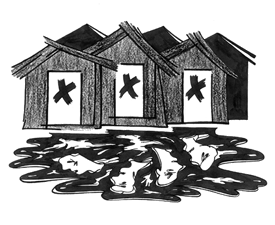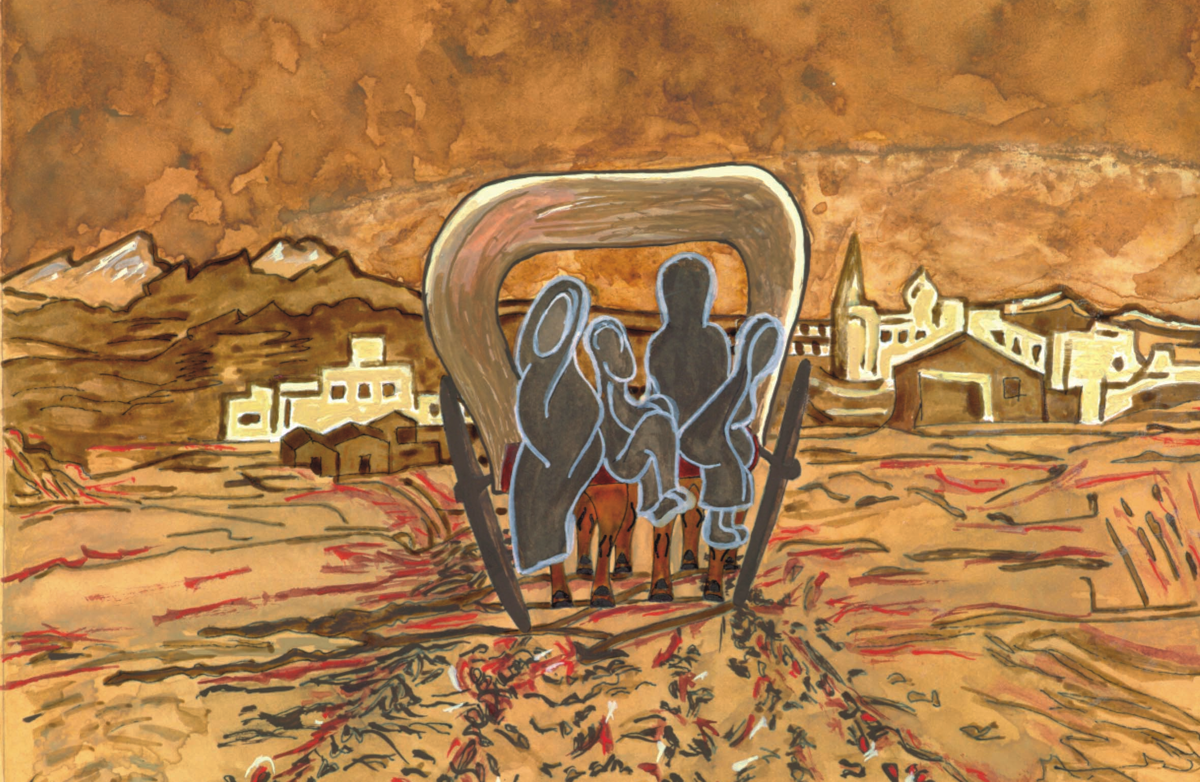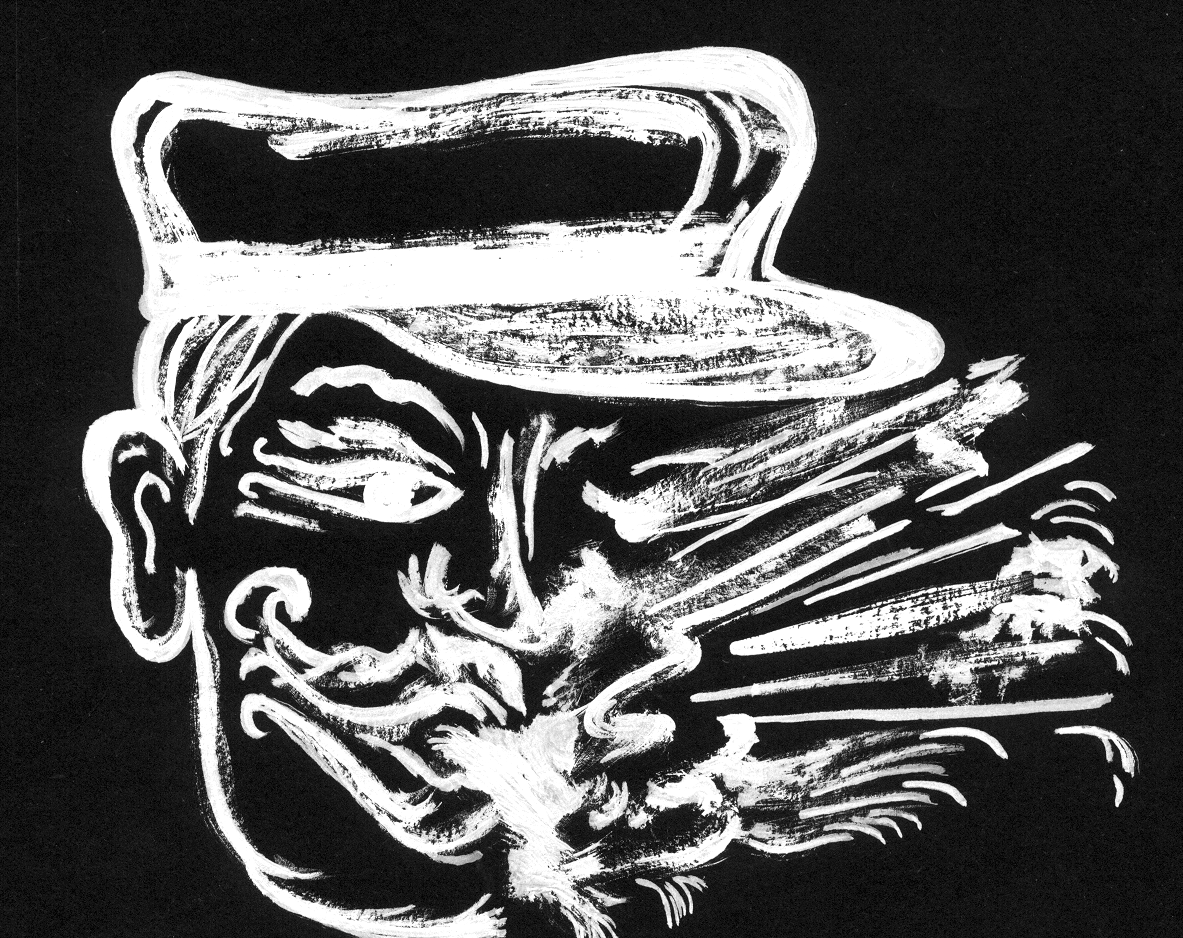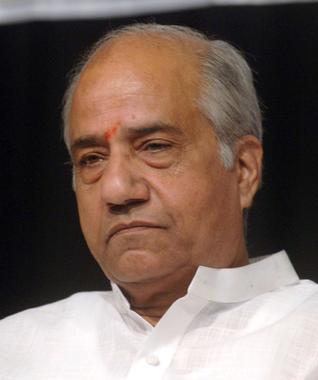The coming together of the country’s largest religious minorities – both targets of Hindutva – is in their own and the nation’s interest, says a Christian priest
Islam and Christianity have much in common. Their respective followers need not, hence, be alienated from each other. But the truth is quite the opposite. Even those Muslims who attend the celebration of festivals like Diwali, says Maulana Wahiduddin Khan, president of the Islamic Centre in New Delhi, keep a distance from Christian festivals like Christmas. “What makes this all the more strange,” he says, “is that these very Muslims, when they need medical help, prefer to go, if possible, to a Christian hospital.”
There is an element of irony in this situation. People from both communities wish to be closer to each other. But they are also suspicious of each other. So they get stuck, and entertain distorted images of each other. Christians think of Muslims as a ‘closed’ community that cannot be reasoned with, while Muslims feel that Christians are self–absorbed and indifferent to their pain and plight. “I am amazed,” Prof. Tahir Mehmood, chairman of the National Commission for Minorities told this writer, “at the apathy of the leaders to the need for greater unity between the two.”
Inquiries reveal the following areas of consensus:
Muslim–Christian unity is the need of the hour: It is obvious that Muslims and Christians stand only to gain by co–operating with each other. Their current alienation aggravates their vulnerability. If any outfit, for example, wants to modify its anti–Muslim image, it targets Christian workers and their places of worship. If and when it becomes expedient to prove the contrary, Muslims will once again be targeted. It is high time we rejected the stupid notion that the enemy of our enemy is our friend!
It is attainable: From the scriptural and practical angles, there are more compelling reasons for these two religious communities to come together than to remain separate. For one thing, unity is of the essence for these two faiths. That is what supposedly distinguishes them from other religions — Hinduism, for example. As a matter of fact, this has been the main point of resentment against them. Now, it is absurd that Islam and Christianity swear by unity, but remain forever disunited!
But there are stumbling blocks that need to be reckoned with: These are historical, theological, sociological , and political.
lHistorical skeletons: The foremost stumbling block, according to Wahiduddin Khan, is the ‘baggage of historical memories’. There is, for example, the painful memory of the Crusades. There is also the feeling among Muslims that Christians were in favour of the British displacing the Mughal Empire.
l Theological bugs: Muslims are hurt that Christians do not accept the authenticity of their faith. While Muslims acknowledge Christ as a true Prophet, Christians regard Mohammed (Peace be upon him), as a false Prophet. Muslims also feel that Christians show double standards on the question of conversion. When a Muslim converts to Christianity it is hailed as a victory, whereas when the opposite happens it is seen as a defeat. It is also widely feared that if Muslims are allowed to intermingle freely with Christians, they could be drawn to that religion.
Christians, in turn, feel hurt that their brethren discount the divinity of Jesus. They resent the double standard in Muslims, claiming religious freedom for themselves, but denying the same to all others, especially to Christians, in countries where they are in power.
l Sociological and economic walls: According to Dr. Iqbal Ahmed, department of Urdu and Persian, St. Stephen’s College, Delhi, the reason for the distance between these two communities is the backwardness of Muslims. Most of them are so poor that they have to work from morning till night just to keep body and soul together. They are left with no time to interact with anybody else. Christians, in comparison, are better off. This social wall keeps them at a distance from each other.
l Political pitfalls: Muslims think of Christians as an indifferent community, whereas Muslims want a place in the political map of India. A Christian leader, preferring anonymity, pointed out that Christians are scared to be identified with Muslims as this could be politically costly to the former. Christians are not targeted by Hindus to the extent that the Muslims have been. They will make themselves far more vulnerable if they are seen to be sympathising with the Muslim cause, he felt.
“In politically sensitive issues,” says Dr. Anil, principal, St. Stephen’s College, Delhi, “Christians tend towards cautious neutrality. And that is the case not only in the political, but also in the inter– denomi-national context.”
Our disunity is imported and we don’t have to be bound by it: Neither of these communities from India was responsible, even remotely, for the Crusades. Indian Christian loyalty to the British Raj is largely fictitious. In real terms, Christianity is no threat to Islam in India, as far as conversions are concerned. Above everything else, the alienation between these two communities, says Maulana Wahiduddin Khan, is not only unfortunate but also unwarranted.
The Quran makes no mention of any enmity between the two communities. The Holy Book does urge upon Muslims to emulate positive Christian values like mercy and compassion. The Scriptures, which contain true religious guidance, rather than the shifting biases of history, should guide our choice and conduct.
No worthwhile efforts have been made in this direction: Perhaps there is a time for everything. The need to liberate India from the yoke of British domination made Gandhiji prioritise Hindu–Muslim unity. In the present–day context, Muslim-Christian unity could be as important as Hindu–Muslim unity then was. An earnest effort needs to be launched in this direction. What is the obstacle — the fact that the leadership of both communities has a communal outlook? Quite a few ordinary people from both communities suspect that it is the outlook of their leaders that keeps them apart. It amounts to an admission in real terms that commu-nalism charac-terises these faiths that claim to be universal.
To understand this anomaly, it is helpful to remember that the word ‘communal’ does not have in the univer- sal context the negative meaning it has in the Indian context. No univer-sal faith that is true to its essence can afford to be communal. Commu-nalism is an abdication of the universality of its vision and vocation. It denotes an incapacity to relate positively to the forces beyond one’s own faith. That disability is more natural to a territorial or tribal, rather than to a universal, religion. Therefore, Islam and Christianity should either give up their claims to universality or rid themselves of every trace of the communal outlook that keeps them apart.
It is relevant to note here that Islam and Christianity are ‘Semitic’ only in a limited sense. They are essentially universal. But this is a fact that both communities tend to forget. Universal faiths cannot entertain ethnic or other divisive mindsets. In the days ahead, it becomes all the more necessary to delve deep into the resources of their universalistic faiths in view of the emerging global order. The crucial fact is that only a universal spiritual vision will be adequate to equip us to negotiate the emerging global order.‘For’, not ‘against’!
Unity is neither good nor bad in itself. What really matters is on what we unite. Also, why we want to unite. Hate, it is assumed, is a powerful unifying force. Unity forged out of hate can only be a cause of destruction and greater disunity. It would be tragic if Muslim–Christian unity were to be envisaged along these lines. It will also be ironical because these communities have been used in recent years as hate- objects by fundamentalist forces to help forge unity in Hindu ranks. We are not strangers to the destructiveness inherent in such an enterprise, even when its popular appeal was mercifully very limited. The fact that this project has not ingratiated itself to the larger Hindu community is in itself a tribute to the spirit and culture of India and Hinduism.
So, we need to bear in mind the crucial distinction between “uniting” and “uniting against”. It is not gainst Hindus, or against anyone that the two communities need to unite. It takes very little hindsight to recognise that uniting against any force has been counter–productive. It is to build a united and dynamic India and to reinforce the principles of justice, righteousness and the essential oneness of all humanity that we need to unite. Such unity will not be restricted only to these two communities. Their unity could be a catalyst for greater national unity. The ultimate aim should be to substitute the culture of hate and alienation with a spiritual culture of love and constructive patriotism.
In this context Muslim–Christian unity assumes special significance. “These two great faiths,” reflects Prof. Mohammed Amin, formerly vice–chancellor, Hamdard University, “trace their origins to Abraham.” He goes on to add, “And the root of their discord rests here. So also the rationale for their possible unity.” According to the Bible and the Koran, Isaac and Ishmael, from whom the two communities have descended, were the sons of Abraham. Its a matter of some irony that the two could not get along well only because they were brothers! Moreover, Islam and Christianity are the two major world religions. Their interface has shaped much of modern civilisation and continues to be important for stability and peace in the world. The West prefers to project the Islam-Christianity interface in terms of an irreconcilable civilisational conflict. That is a malicious bias that we are not obliged to entertain or encourage.
What shall we do? As of today, even those who are cynical about bringing the two communities together agree that their unity has assumed unprece-dented and urgent importance. In order to make any progress at all in this endeavour, the following factors, among others, need to be grappled with.
The need to shift from the love of power to the power of love. The root of all divisions is the lust for power and the vested interests that grow out of it. The problem is not so much that religion and politics are inter-mixed. It is natural that they are for both impact on human existence and well being. The real problem is that religion and politics are wielded as instruments of power. The power game not only accumulates and concentrates, but also scatters and alienates. It intensifies enmity. The condition for promoting communal harmony is a paradigm shift — from spreading enmity to love of the neighbour. We need to substitute the divisive role of power with the cementing power of love.
The shift from religion to spirituality. It is basic to the nature of all religi-ous commu-nities that exclusive loyalties are inhe-rent in the faithful. While loyal-ty is a necc-essary aspect of community formation and integral to a sense of belonging, absolute loyalty turns a religious community into a protected area where non–members become trespassers. At that point, the gulf between religion and spirituality begins to widen. The mark of true spirituality is that it enables people to reach out to others (especially those who are different from themselves) in love. The love that must limit itself to those who are like us is weakening from a spiritual point of view whereas it is deemed quite the norm in the religious context. Then differences take precedence over deeper, inner similarities and shared values.
During times of decay, a religion will be dominated by divisive instincts. But that does not mean that religion is divisive. What it indicates is that the religion in question has lost its spiritual wholeness. It becomes necessary then to make an effort to enunciate its true spirituality so as to heal the wounds resulting from the ‘communal’ goals pursued by it.
Unity, religion and the Indian context:
Religious plurality is the essence of the beauty and richness of the Indian context. We are oriented in space rather than time. The time–oriented culture is more centred on unity, even uniformity; whereas a space –oriented culture is centred on plurality and diversity. But diversity, as Nehru emphasised, needs to be under–girded by unity. The ideal goal is ‘unity in diversity’. Nehru did not, alas, realise that this could only be a spiritual goal.
At any rate, we need to reckon that unity has not been a consistent feature of Indian history and culture. Rather, to the contrary. It is here that Islam and Christianity, imbued as they are with the spirit of unity, need to make a radical, patriotic contribution. That mission needs to be undertaken not from a spirit of superiority, but out of the eagerness to serve our country that we so fervently love.
The time has come for Christians and Muslims to realise in shame that they have failed miserably in this inspite of their presence and witness in the Indian context. The tenets of both religions urge us to be promoters of unity. The communal outlook is incompatible with this vocation. But fractured communities as they are at present, the Christian and Muslim communities themselves are lamentably divided. They are fragmented both vertically and horizontally—there is discontinuity between the agenda of the elite and the aspirations of the common man in both communities. Horizontally, the Christian community, more than the Muslims, is splintered along sectarian lines. Some of the Christian denominations are happier to be with people of other faiths than with the people of other denominations within their own faith.
As against this ground reality, a fictitious image of the two communities as highly united and mobilised has been cooked up and dished out to the credulous. This was done, as everyone knows, only to generate the pressure required to forge a sense of unity in the diffused Hindu ranks. But, in the interest of truth it needs to be confessed in shame that the assumption of inner unity within these faiths is a propaganda lie. If only it were true!
It is not in the interests of the members of these communities to be alienated from each other. On account of the distance between them, all sorts of irrational suspicions and distorted images spring up. Most importantly, this violates the very spirit of these two religions. A Christian, for example, is commanded to ‘love your neighbour as yourself.’ The Scripture does not qualify this Commandment to the effect that it should be obeyed only if your neighbour happens to be a Christian! The idea of the ‘neighbour’ does not admit any distinction at all.
The excitement in the Indian context is that your neighbour could be a Hindu, Muslim, Sikh, Marxist, agnostic, friend, enemy, and so on. It involves a triumph over these categorisations. It is also signifies the ability to see the hurting humanity beneath these divisive labels. Such robustness is a necessary condition for communal harmony. Those of us who are interested in the future of our country and the future of our humanity need to insist that loving one’s neighbours is a more authentic expression of true religiosity than hating any of them in the name of God, mandir, mosque or church.
Unity cannot be born out of a vacuum.In order to unite we need:
l An agenda: a goal or purpose that we can pursue together. That could, for example, be the building up of a modern nation, vibrant and dynamic so as to meet the aspirations of her people and face the challenges of the New World Order. It could be the creation of an egalitarian society in which justice and righteousness is upheld at all costs. Or, it could be the development of these two communities so that their numerical weakness is neutralised, and so on.
lA commitment to truth: It is not an accident that all divisive projects and vested interests bank heavily on the propagation of lies. In spite of what we witness today, it is integral to the Indian cultural tradition and outlook that ‘truth alone wins; not falsehood’. Truth is also the foundation for unity. Every attempt to spread falsehood about one’s faith or community should be resisted with utmost vigour.
l A sincere effort to develop and empower people in general, and one’s own community in particular: It is in this respect that the current religious and political elite is wanting. It is as though the development of the common people is inimical to their vested interests. As long as this malady is not healed, there can be no hope for transcending communal barriers.What shall we do?
Apart from recognising the ideological and psychological barriers, there is also a need, as Maulana Wahiduddin Kahn emphasises, to approach the situation through various practical steps. His suggestions in this respect are outlined below:
lConstitute a joint team to examine the stumbling blocks for unity and dialogue between the two communities. l Set up a joint research centre to study issues pertaining to Muslim-Christian unity and to establish the rationale for promoting unity. l Evolve a common socio-politico-economic programme.
l Share the facilities available to develop each other — educational institutions, for example. It will send a powerful signal of goodwill if the educa-tional institutions that Christians have are made accessible to Muslims.
l Share each other’s festivals.
l Efforts should be made to increase the opportunities of inter-action between these two communities and to improve their know-ledge of each other.
In conclusion it needs to be affirmed that the time to address issues pertaining to Muslim–Christian unity has indeed come. But this task has to be approached not from a communal, but from a spiritual and patriotic outlook. It is not against anyone, but for the sake of, especially for the sake of, the nation, that the unity agenda needs to be vigorously pursued.
Such a pursuit should be founded on the truth that all religions are unique. It should also be enlivened by the hope that differences do not have to drive us apart. They can be transcended by the spiritual deepening and renewal of these two communities. When that happens, they would exemplify a culture of unity that could heal the many divisions with which our land continues to be wounded at the present time.
Archived from Communalism Combat, July 1998. Year 5 No, 45, Cover Story 1







.jpg)